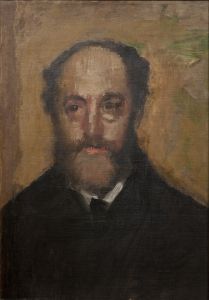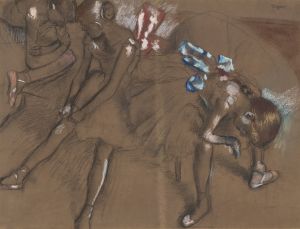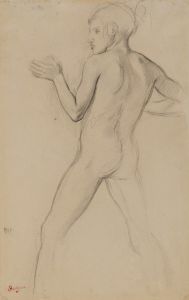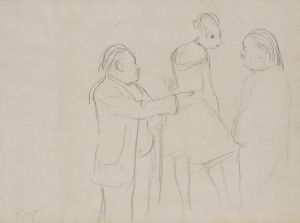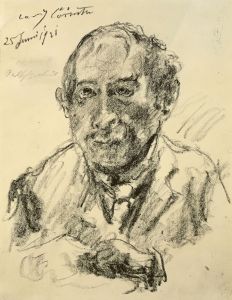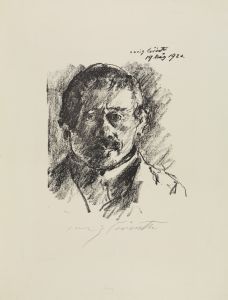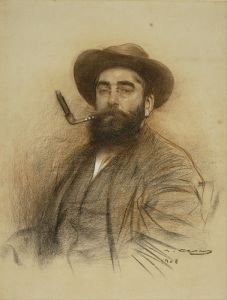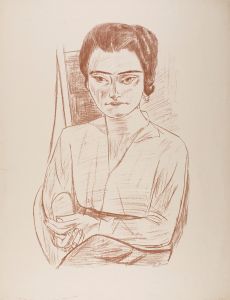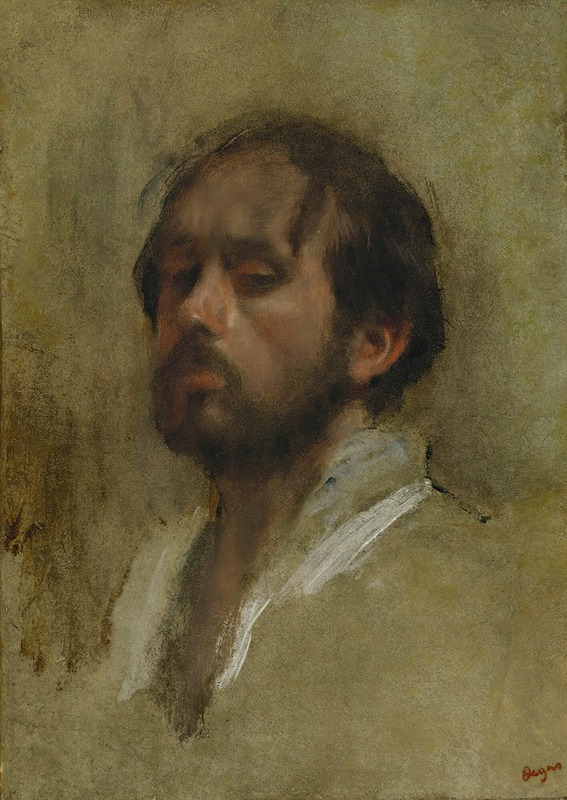
Autoportrait
A hand-painted replica of Edgar Degas’s masterpiece Autoportrait, meticulously crafted by professional artists to capture the true essence of the original. Each piece is created with museum-quality canvas and rare mineral pigments, carefully painted by experienced artists with delicate brushstrokes and rich, layered colors to perfectly recreate the texture of the original artwork. Unlike machine-printed reproductions, this hand-painted version brings the painting to life, infused with the artist’s emotions and skill in every stroke. Whether for personal collection or home decoration, it instantly elevates the artistic atmosphere of any space.
Edgar Degas, a prominent French artist known for his contributions to Impressionism, created a variety of works throughout his career, including paintings, sculptures, prints, and drawings. Among his oeuvre, Degas produced several self-portraits, though not all of them have survived or are widely documented. One such work is "Autoportrait," which reflects Degas's interest in exploring his own image and identity through art.
Degas was born on July 19, 1834, in Paris, France, into a moderately wealthy family. He initially pursued law but soon shifted his focus to art, enrolling at the École des Beaux-Arts in 1855. His early training was rooted in classical techniques, and he was heavily influenced by the Old Masters, which is evident in his meticulous approach to composition and form.
Throughout his career, Degas was known for his keen observational skills and his ability to capture the nuances of human movement and expression. While he is most famous for his depictions of ballet dancers, racehorses, and everyday Parisian life, his self-portraits offer a more introspective glimpse into his personal world.
In his self-portraits, Degas often employed a realistic style, focusing on capturing his likeness with precision. These works reveal his interest in the effects of light and shadow, as well as his skill in rendering textures and details. Degas's self-portraits are not merely exercises in vanity; they are studies in character and mood, reflecting his introspective nature and his desire to understand himself as both an artist and an individual.
Degas's self-portraits are relatively few compared to his other works, and they vary in medium, including oil paintings, drawings, and pastels. Each self-portrait provides insight into different stages of his life and artistic development. They often depict him with a serious, contemplative expression, highlighting his dedication to his craft and his thoughtful approach to art.
While specific details about the "Autoportrait" by Degas are limited, it can be understood within the broader context of his self-portraiture. These works are significant not only for their artistic merit but also for what they reveal about Degas's personality and his evolving self-perception over time.
Degas's self-portraits, like much of his work, are characterized by a sense of immediacy and intimacy. They invite viewers to engage with the artist on a personal level, offering a rare glimpse into the mind of one of the 19th century's most influential artists. Through these works, Degas continues to be remembered not only for his technical skill and innovative compositions but also for his ability to convey the complexities of human emotion and identity.
In summary, while specific information about the "Autoportrait" by Edgar Degas may be scarce, it is part of a broader tradition of self-exploration and artistic introspection that defines much of Degas's work. His self-portraits remain an important aspect of his legacy, offering valuable insights into his life and art.









